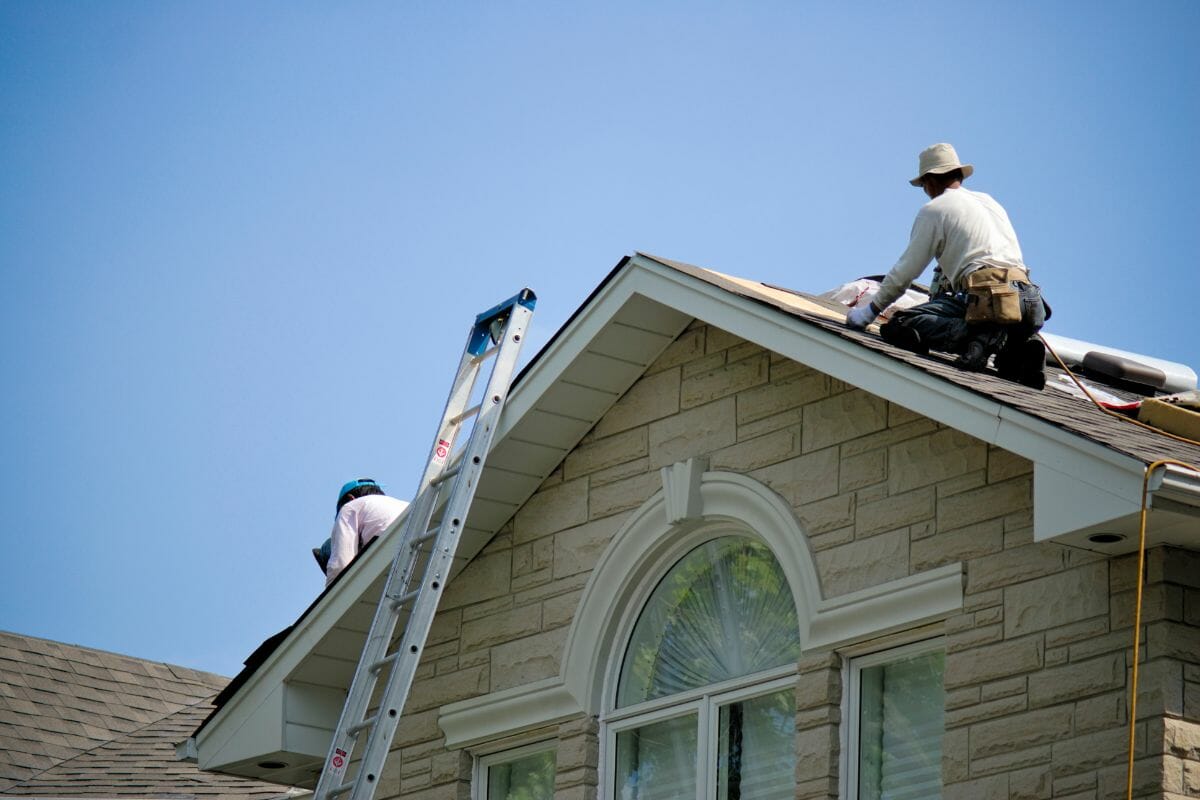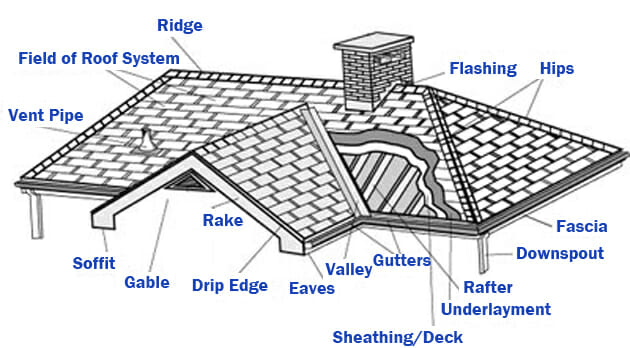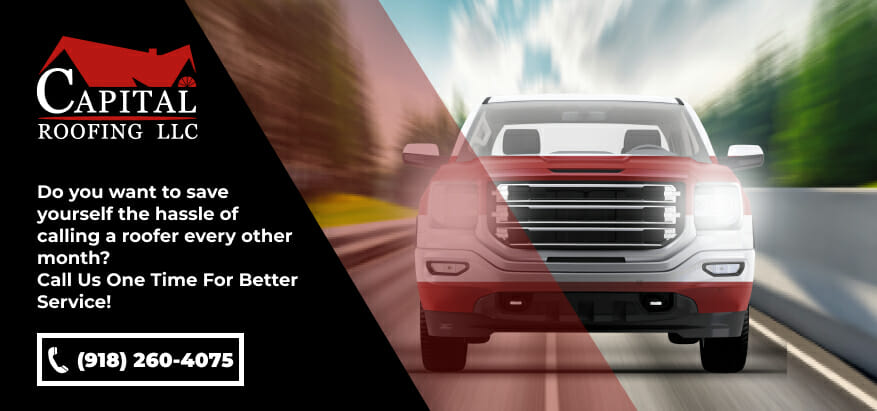There’s a reason why the old saying “a roof over your head” means “home”: a roof is what keeps your loved ones safe and protected. It holds your house together and battles the forces of nature every day. But most of us aren’t experts when it comes to roofs, other than knowing that they keep you dry and warm. If you’re curious about what goes into building a roof, then we can help you.
Read on for an introduction to some of the main parts of a roof. This will help you to know more about the roofing system so that when you want to install a new roof or replace an existing one, you are accustomed to the parts and can understand your contractor. So let us get started.
Rafters And Trusses
When we talk about building a new roof from scratch, then these parts of a roof will definitely come first on the list. Both rafters and trusses are used to lay the structure of the roof. Thus these are the primary roof components and thus play a very crucial role in the integrity of the roof.
Roof rafters are the horizontal beams that form the base of a roof. They are attached to the walls and support the weight of the roof. The rafters can be made from wood, metal, or concrete. On the other hand, trusses are used more commonly now a days. They are prefabricated and then transported to your home. These are also made of wood.
Roof Deck
The deck is the primary part that holds everything else together. The roof deck is a type of flat surface that is installed on the structure of the roof, i.e., rafters. On the roof deck, the contractor will install all the other essential layers, such as underlayment, shingles, etc.
What is roof decking made of?
It’s typically made from wood or plywood, but it can also be metal or composite material. Wood products are more commonly used because they’re easy to install and less expensive than steel. Often made with plywood or oriented strand board (OSB), decks are typically manufactured in 4-foot sections that can be easily installed over existing rafters after they’ve been cut down to size.
Underlayment
Underlayment is a layer of insulation that goes under the shingles. It prevents heat loss, and it also helps to reduce noise and drafts. Many do not consider underlayment as a necessary part of the roof, but it’s an important part if you want to keep your roof in good condition.
A good quality underlayment helps to seal the roof, protect the shingles from the elements, and prevent leaks. It also allows you to get a longer life out of your shingles by providing additional protection against moisture and UV rays that can damage them over time.
Note that in some areas that are prone to low temperatures and snow, you will need to install an ice and water shield as well.
Roof Shingles
The roof shingles are the topmost parts of a roof system. The contractor will install the roofing shingles over the underlayment. Since they go at the top, these are the roofing materials that are actually visible to you and your neighbors.
Shingles are the most common type of roofing material. They come in various colors and textures, including wood-grain and slate options that give your home a more natural feel while protecting it from the elements. Shingles can be made of multiple materials, such as asphalt or plastic. Some of the most common types of shingles are:
- Asphalt Shingles
- Metal Shingles
- Wood Shingles
- Clay Tile Shingles
Gutters
Gutters are one of the most critical parts of a roof. They help to prevent water from damaging your home and its foundation. The gutter systems are one of the last roof components to be installed, and they are positioned on the eaves or the edges of the roof. They are installed around the home.
The gutters direct rainwater from the roof away from your home and keep it from pooling in certain areas.
Flashing
Flashing is a metal or plastic piece that is used to cover the joints of different parts of a roof. Flashing helps to prevent water from getting into the joint and causing problems, like leaks. Though they seem like little pieces, they do play a crucial role in helping your roof stay protected from leaks.
Roof flashings are applied to the vulnerable, leak-prone areas of the roof, such as chimneys and skylights. Also, it can be used where a roof meets the wall of a building. Here are some of the common flashing types.
- Counter Flashing
- Step Flashing
- Apron Flashing
- Chimney Flashing
Fascia
Also called fascia boards, there are horizontal boards that run along the bottom edge of the roof. They are often installed with the soffits. The primary purpose of these roof components is to hold and support the gutter systems.
Fascia boards give your home’s exterior a finished look by hiding the seams where shingles meet. They also provide protection against water damage and rot. They’re typically made of wood or metal and can be painted, stained, or left natural.
Soffits
A soffit is one of the parts of a roof under the eaves and runs around all four sides of your house. In other words, soffits are the underside of your roof. They protect the fascia and rafters from water damage.
It’s typically made from wood, metal, or vinyl and is often painted to match your siding. These soffits can be vented or non-vented. Some people choose to paint it to fit their home’s color scheme, while some prefer to leave it in its natural appearance.
Soffits can also be used to hide vents, chimneys, and pipes that come through the walls of your house—removing clutter from an attic space can make it feel more significant in size.
Roof Valley
A roof valley is a space between two sloped roofs. A roof valley often marks a change of angle or structure of your roofing system. It’s usually the part of the house where rainwater collects and flows down to gutters.
Since they are located at the intersection of two sloped parts of a roof, and they collect water when it rains, valleys are prone to water damage if not correctly installed.
Roof Ridge
The roof ridge, also known as the “ridge” or “centerline,” is the topmost part of a roof. It’s where two sides of the roof meet, and it’s usually made from metal or shingles. Roof ridges are often covered with shingles (with the help of ridge caps) but not always—sometimes, they’re just left exposed as a design choice.
Skylights
A skylight is a window on the roof. Earlier, these parts of a roof were not much talked about; however, in recent times, more and more homeowners are considering skylights for their home due to the variety of benefits it offers. These skylights are often seen as an environment-friendly way to increase the light of your home. This can be a useful source of natural light, heat, and air. Since they provide natural light, these roof components can help you save on your energy bills as well.
Skylights are often used as decorative features in homes because they improve their visual appeal by adding character and depth. However, remember that skylights can act as points of potential trouble if they’re not properly installed or maintained.
Want Help With Roofing Services?
We hope you now know more about your roof than most people do. If you need more information, or you require professional roof repair and replacement services, then be sure to contact our team at Capital Roofing. Our roofers have years of experience under their belt and are able to handle even the most complex situations.
Call us at (918) 260-4075, and we will be more than happy to help you.


